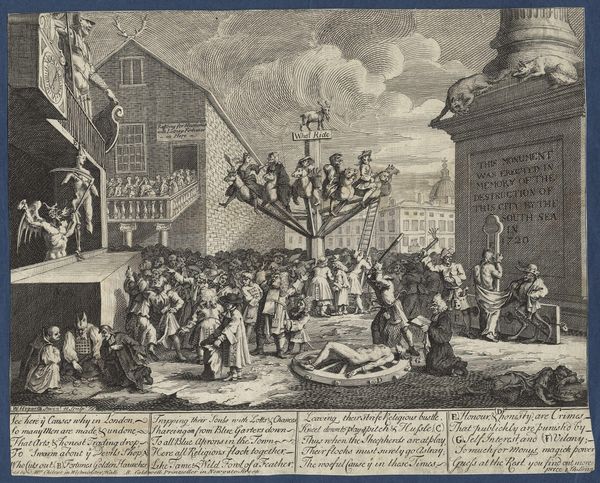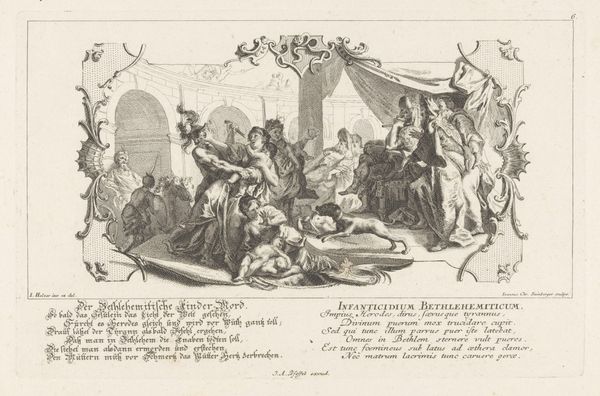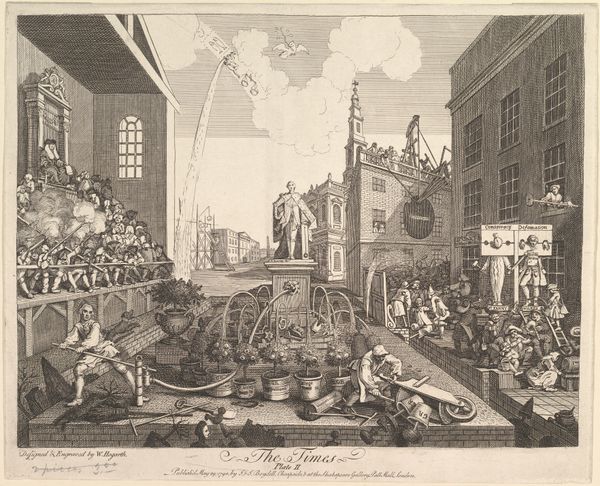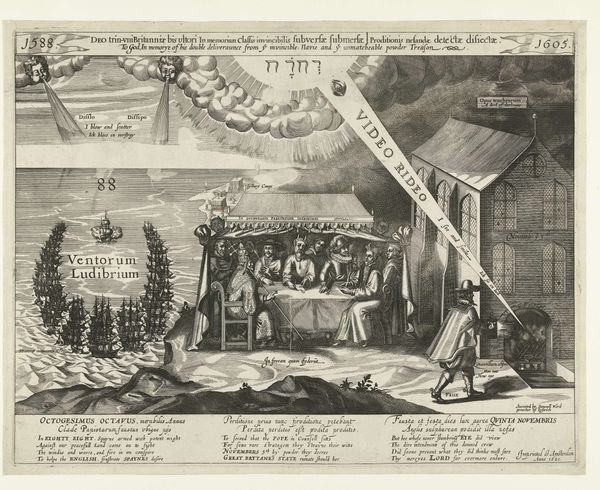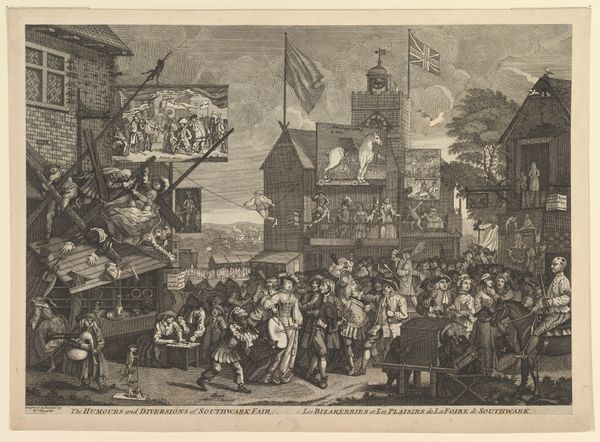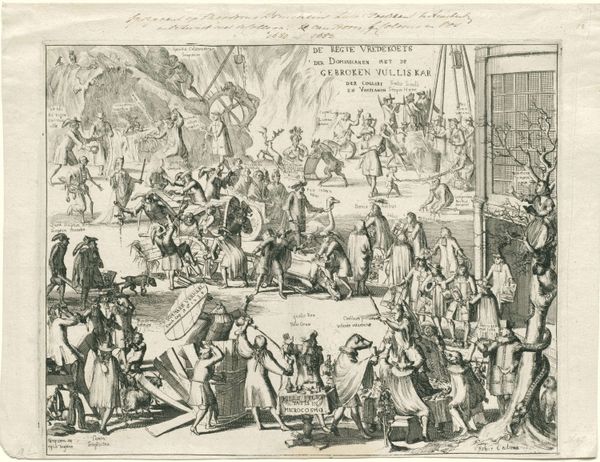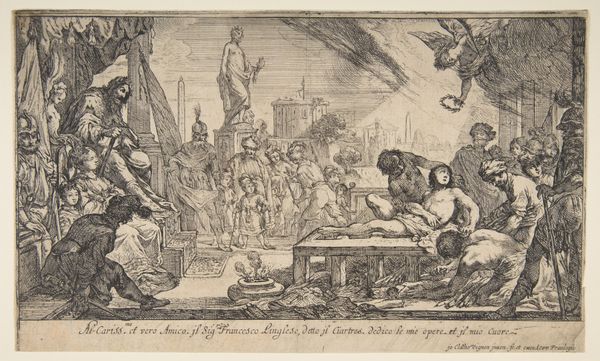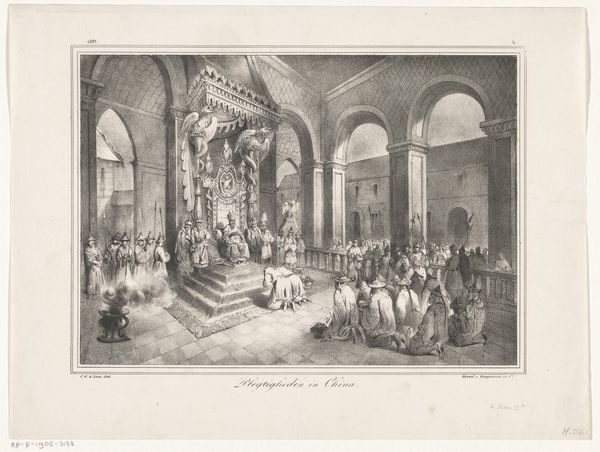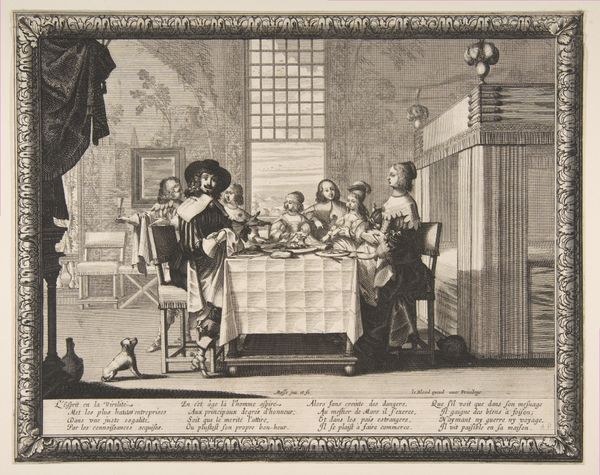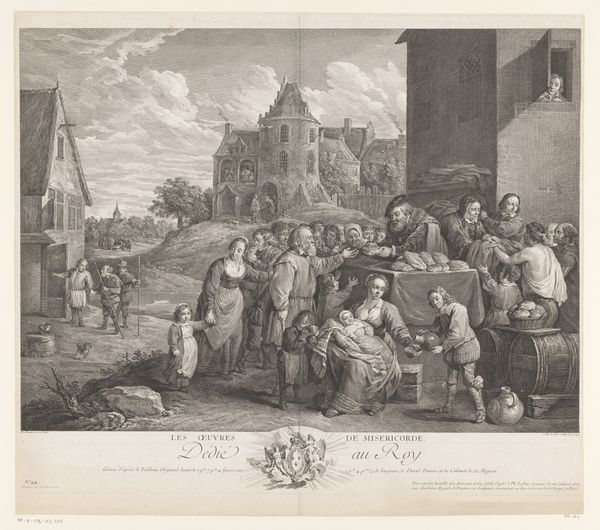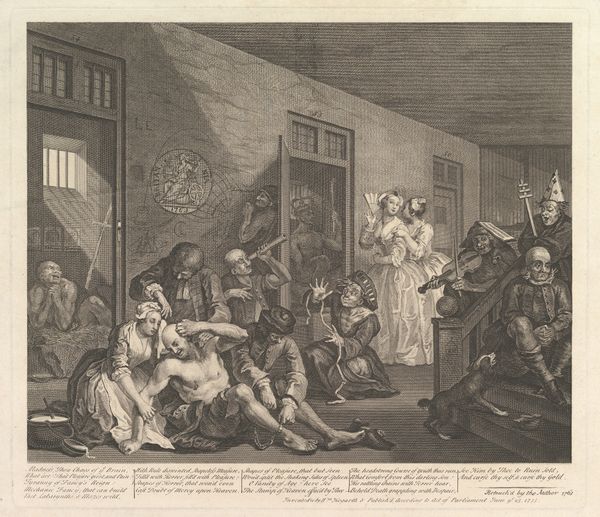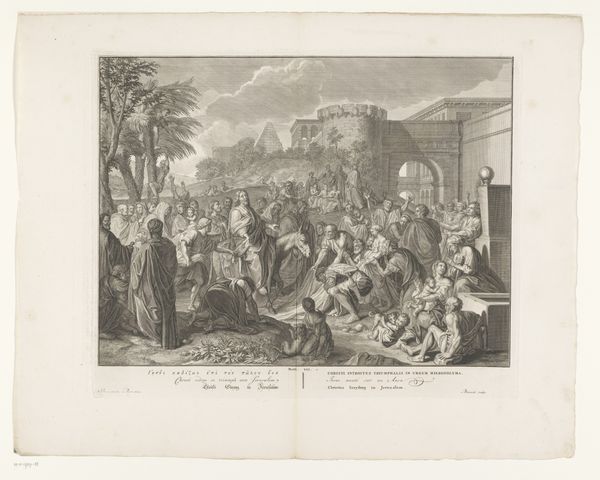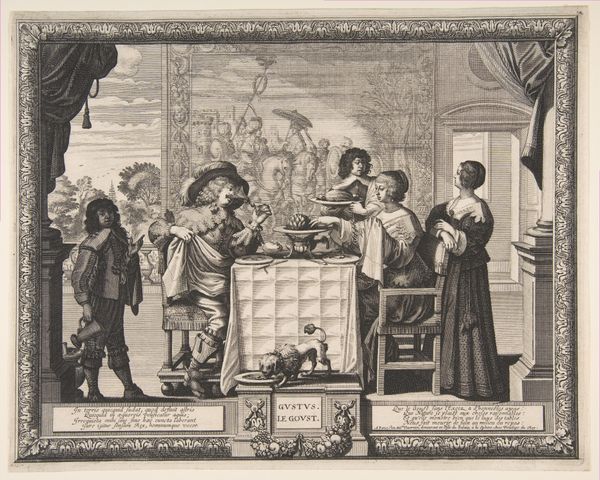
drawing, print, engraving
#
drawing
#
narrative-art
#
baroque
# print
#
history-painting
#
engraving
Dimensions: plate: 10 13/16 x 13 3/8 in. (27.4 x 33.9 cm) sheet: 11 5/16 x 14 in. (28.7 x 35.6 cm)
Copyright: Public Domain
Editor: This is "An Emblematic Print on the South Sea" by William Hogarth, sometime between 1721 and 1800. It’s a print, probably an engraving. There's so much going on, a real sense of chaos and critique. What strikes you when you look at this work? Curator: Hogarth was acutely aware of the booming print market and crafted these images for mass consumption. The subject here is the South Sea Bubble, a financial crisis rooted in speculative trading. Notice how he uses the print medium itself – repeatable, reproducible – to comment on the rapid circulation of capital and the frenzy of the market. How do you read the materiality of printmaking as commentary on financial speculation? Editor: That's interesting. So the *process* of printmaking, the mass production aspect, mirrors the economic activity he’s criticizing? Curator: Exactly! Look at the imagery. The figures on the roundabout, losing their hats and wigs. That roundabout itself is a tool for entertainment but made to appear quite destructive here, like a meat grinder of bodies. Where do those disembodied hands lead us? And who benefits from all of this movement? Also, don't neglect to see how social satire has transformed since, especially considering current markets. Editor: They point towards the top, toward the goat. Was that some kind of symbol? Curator: The goat is the heraldic symbol of the city, suggesting that all of society—church, state, military—participated in the "feeding frenzy," this market. Now compare the people feeding from it to how actual sheep are referenced in the writing. Is there some connection? And consider all these "players" roles now in society and whether or not they occupy the same amount of space, and for the same gains as one another. Editor: So Hogarth uses the materials and process of printmaking, alongside these symbolic characters, to expose the South Sea Bubble as a societal problem built on everyone's greed and not much benefit, or attention for those at the "bottom"? Curator: Precisely. This print’s not just *about* the South Sea Bubble; it *is* a product *of* it, meant for quick consumption in a burgeoning capitalist market that it critiques. Looking at this piece in terms of production really helps understand Hogarth’s aim. Editor: I see. By looking at *how* it was made and distributed, you uncover layers of meaning beyond just the depicted narrative. Thank you!
Comments
No comments
Be the first to comment and join the conversation on the ultimate creative platform.
